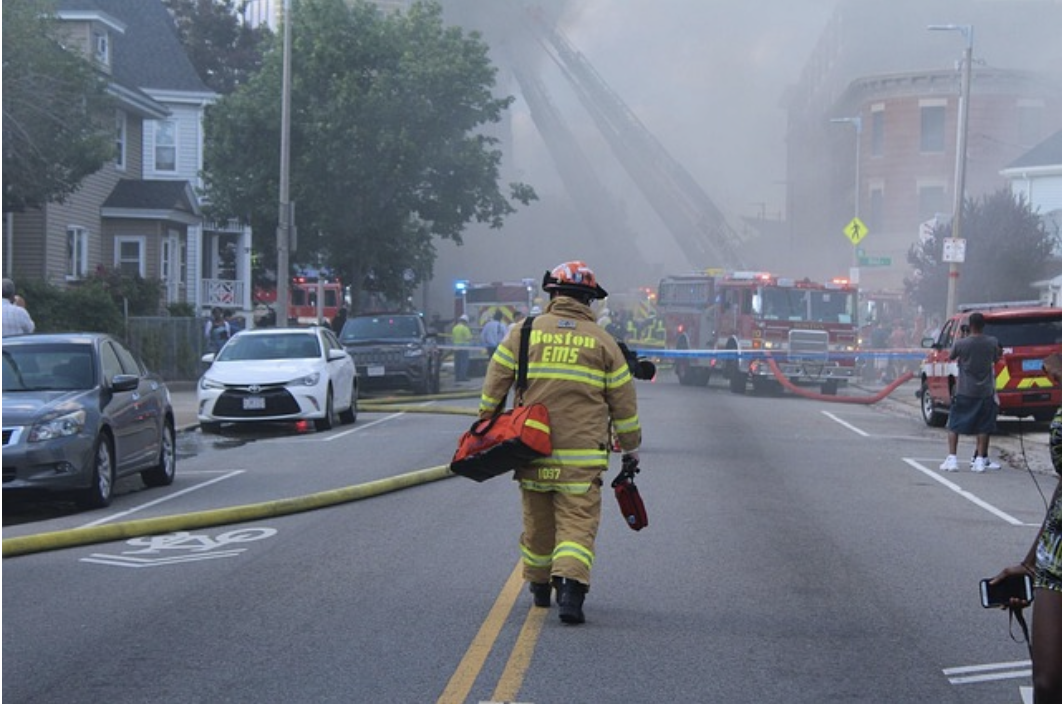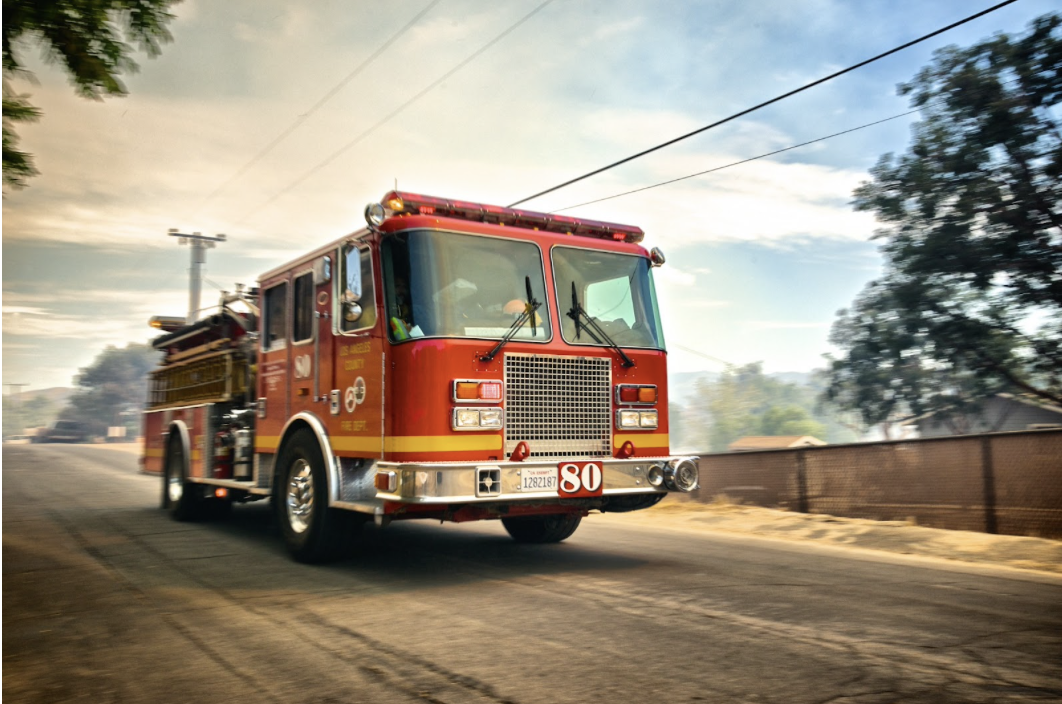Firefighting is one of the most dangerous jobs in the world. On any given day, firefighters can be exposed to hazardous materials, natural disasters, electrical risks, and burning buildings as they attempt to save lives. They are the first responders, fighting through smoke and carbon monoxide to ensure everyone makes it alive.

Where does firefighting rank in most dangerous jobs?
Firefighting is undoubtedly one of the most dangerous jobs, often ranking among the top 25. USA Today reported that in 2017, fatal injuries among firefighters occurred at 8.9 per 100,000 workers. Unsurprisingly, traffic accidents were the most common fatal incidents they faced. While fireground-related burns, smoke inhalation, and collapsing structures are ever-looming risks to consider, only 39% occur at the fireground, according to NFPA.
What is the most dangerous part of being a firefighter?
It’s mostly unpredictability that makes firefighting a dangerous profession. Fire behaves in unpredictable ways, and firefighting essentially puts your safety and life at risk to save another.
Firefighters are frequently exposed to significant fire-borne hazards and must often deal with emergency situations.
How dangerous of a job is firefighting?
The firefighter injury rate is very high. Firefighters may encounter several dangerous incidents, such as collapsed floors, walls, and overexposure in explosive environments.
Is firefighting the most dangerous job?
No, it is not the most dangerous job. Truck drivers, farmers, electrical power line installers, and others have even higher fatal injury rates than firefighters. According to the Occupational Safety and Health Administration (OSHA), fishing and hunting workers are at the highest risk, with a fatal injury rate of 132.1 per 100,000 workers. In comparison, truck drivers are close behind with 91.7 per 100,000 workers.
The Hazards of Firefighting
Firefighting doesn’t just present the risk of fatal injury. Many other hazards could have long-term effects on a firefighter’s mental and physical health.
Burning buildings
Dealing with burning buildings is one of the most dangerous aspects of firefighting because of exposure to smoke, heat, and debris from burning buildings. Firefighters must also go up against electrical risks and hazardous materials like chemicals or fuels when entering a burning building.
Traffic accidents
Firefighters don’t just run into burning buildings; they often race across town to get there in time. With emergency vehicles driving at high speeds, there is always a risk of having an accident while en route.

Equipment failure
Firefighters rely heavily on their equipment when responding to an emergency, from protective gear like helmets and gloves to tools like ladders or hoses. If any of these pieces of equipment fail, it can put firefighters at risk for injury or even death. Regular maintenance and proper use of equipment are essential for firefighter safety.
Wildland firefighting
Wildland firefighting is a significant profession and one that often gets overlooked. Every year millions of acres of land burn across the U.S., making it all the more essential for firefighters to protect the people, their homes, and the forests from these destructive blazes.
Fire seasons are now longer than ever at 78 days compared to what they were forty years ago, which results in increased levels of stress and trauma faced by wildland firefighters all over the country.
From 2000-2019, 400 on-duty fatalities of Wildland Firefighters (WFFs) occurred. These fatalities are due to injuries or illnesses related to heat and smoke exposure and vehicle-related accidents. More alarming, however, is the post traumatic stress disorder (PTSD) that WFFs are at risk of developing due to prolonged physical exhaustion in intense conditions. The occupational hazards don’t just end with physical injuries, WFFs are also at high risk for depression, alcohol use disorder, sleep deprivation, and suicide.

Common Chronic illnesses:
Firefighters are likely to suffer from chronic illnesses due to the nature of their work.
Chronic Respiratory Diseases
Firefighters are exposed to various carcinogens, such as benzene, formaldehyde, asbestos, and polycyclic aromatic hydrocarbons (PAHs).
Cancer
Fire fighters are exposed to a variety of carcinogens during firefighting operations, including benzene, formaldehyde, asbestos and polycyclic aromatic hydrocarbons (PAHs).
Bloodborne Pathogens
Contact with contaminated blood from needlesticks and other sharps-related injuries also places firefighters at risk of contracting hepatitis B and C.
Heart diseases
Firefighters have an increased risk of developing heart attacks due to overexertion and elevated stress levels while on duty.
What is the number 1 killer in firefighters?
Although fires, heat, and building collapses are some of the immediate dangers that firefighters face daily, it is cancer that threatens their lives the most. Sadly, this reality was not discussed in firehouses 15 years ago.
According to the Centers for Disease Control and Prevention, cancer is the number one killer of firefighters. Cancer is caused by inhaling toxic fumes or absorbing carcinogens through the skin. Researchers from the National Institute for Occupational Safety and Health (NIOSH) released their findings, showing a modest increase in cancer diagnoses at 9% and cancer-related deaths at 14% compared to the number of cancers expected using U.S. population rates.
Earlier this year, the U.S. House of Representatives passed the Federal Firefighter Fairness Act, HR 2499. The bill puts measures and provisions in place to protect firefighters from the occupational risks of cancer, providing them with much-needed workers’ compensation benefits should they ever become ill. When passed into law, it may be a small but precious rescue effort to save a life of a fellow firefighter.
Mental Health
Mental health has been a topic of concern for many professions, and fire fighting is certainly no exception. With post traumatic stress disorder (PTSD) being one of the biggest challenges facing members of the firefighting community, it is heartbreaking to know that in the first eleven months of 2021, 70 fire fighters, EMTs, and dispatchers have committed suicide.
It was even more harrowing in 2020 when Retired Fire Department Captain Jeff Dill and his team at FBHA confirmed 125 firefighter suicides.
Exposure to traumatic events and working irregular hours can create an environment for extreme fatigue, which takes a serious toll on a firefighter’s well-being. Over half of firefighter deaths are connected to stress and extreme exhaustion, an alarming statistic highlighting the need for greater awareness of these matters. It’s time firefighters have the necessary resources available to safeguard their physical and mental health so they can continue serving at their best.

Is firefighting a more dangerous job than police work?
When comparing job risks, both firefighting and police work are undeniably dangerous. Firefighting is different, as firefighters put themselves in direct harm’s way to fight the flames and sometimes even risk their lives to save property and others. On the other hand, what policemen do seems no less dangerous due to their unpredictable job. Besides putting themselves in danger by facing violence, they also have to deal with heated standoffs involving firearms.
Statistics speak for themselves. According to reports from 2021, there have been 70 firefighters who tragically lost their lives while carrying out their job, whereas 458 police officers have died while on duty.
Firefighting is a career that takes real courage to pursue. Firefighters take on the duty of entering dangerous situations to protect people and their cities. Despite the risks, many people choose this profession because they understand how important it can be for someone else’s life or their family’s future.


